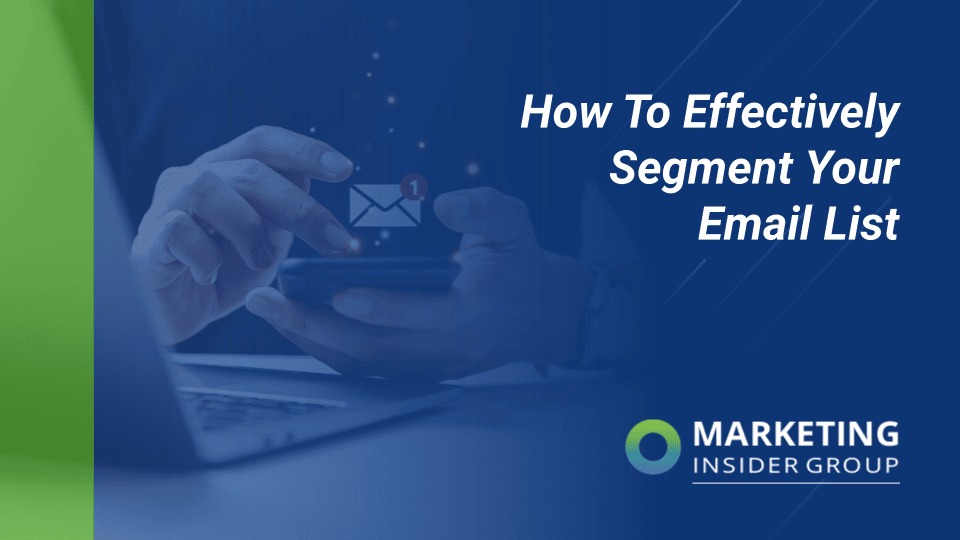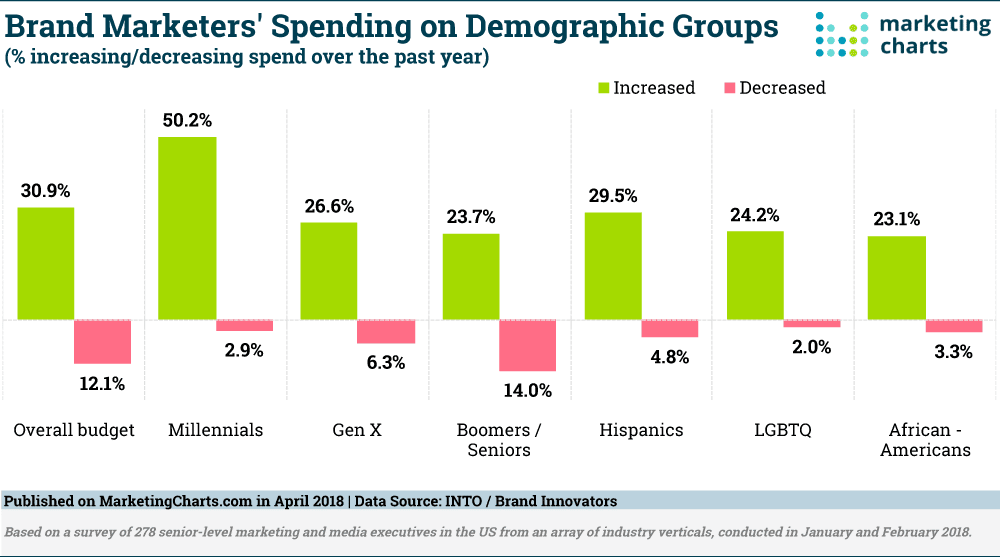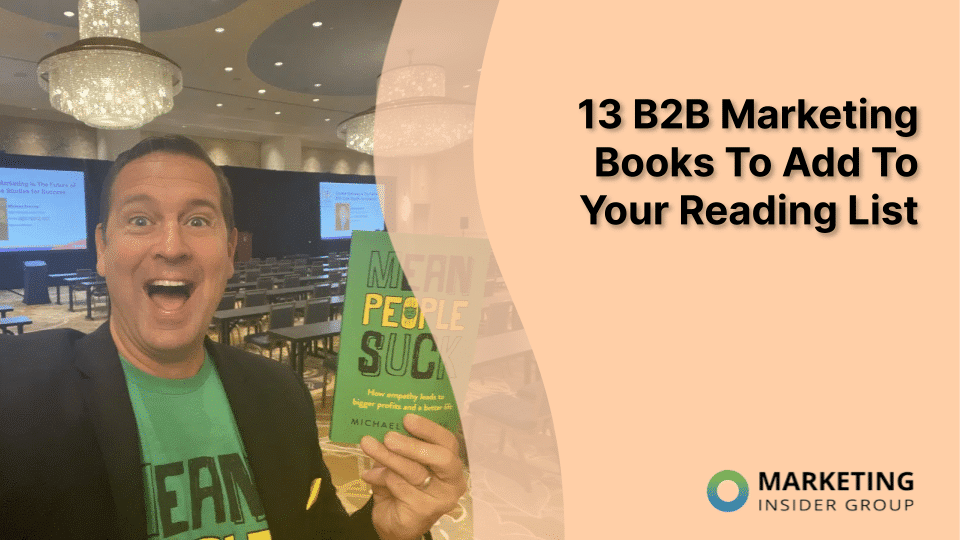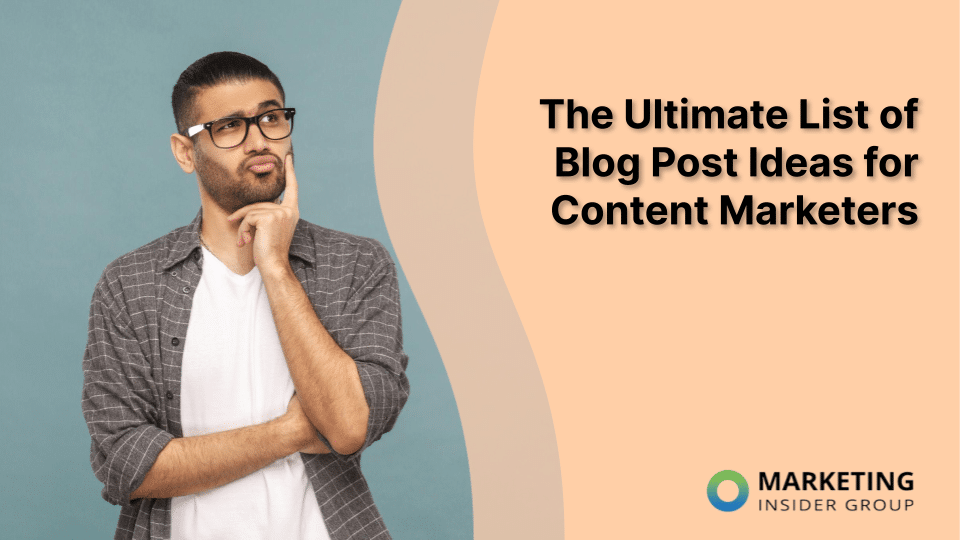
How To Effectively Segment Your Email List
Email marketing almost feels like a retro form of digital marketing nowadays. With the development of social media and general content marketing, sometimes your email efforts might hit the backburner. Resist this urge! Email marketing is important to your efforts, and needs time and attention to maximize its output.
We all know that email marketing isn’t dead – but before sending a single email, businesses need to understand the importance of segmenting email contact lists. Yes, segmentation can be tedious but consider this, 77% of email marketing ROI came from segmented, targeted, and triggered campaigns. Not to mention with sites like Constant Contact it’s never been easier to read your metrics.
Furthermore, MailChimp’s latest report states that the open rates and unique open rates of segmented campaigns were more than 14% higher than non-segmented campaigns. And clicks from segmented campaigns were 100% higher compared to non-segmented campaigns. Additionally, there are 9.37% fewer un-subscribers when emails are segmented.
Most businesses are already implementing some form of segmentation when it comes to marketing communication, but it’s usually only based on demographic information. The truth is, the more you’re able to personalize messages, the higher your chances of engagement and conversion.
Here’s a quick brush up on email segmentation from Max von Collenburg:
Quick Takeaways:
- Email marketing is still alive and well in today’s digital marketing space
- Segmenting your email list can lead to better leads and conversions
- By utilizing effective segmentation you can maximize your overall content marketing strategy
Here are a few ways to effectively segment your contact list and make the most out of your email marketing campaigns:
Segmentation by Demographics

Source: Marketing Charts
The most basic way to start segmenting your contacts is to use demographic data such as location, age, industry, and job level. Demographics can tell a lot about what a prospect might want or need, so the more info you can get during a prospect’s signup, the more options you’ll have for segmentation. That being said, you should only be asking for as much detail as your sales team needs to qualify the lead. Anything more will overburden your audience and potentially send them packing.
Here are some common ways to segment by demographic:
- Geography: Retail companies and location-based apps that make email offers based on location are particularly effective, but B2B and global organizations can also take advantage of geographical information. For instance, businesses can alter their messaging for US and UK audiences to address how some words are spelled differently in both countries.
- Age: Are you targeting Millennials or Gen Xers? Segmenting by age will help you send the right message to the right people. Make lifelong customers by considering that their needs today may be different from their needs 10 years from now.
- Occupation/Industry: If your product appeals to a wide range of audiences, it’s important to remember that they may come from different fields. A marketer and developer may both appreciate your automation tool, but the former will want to know how to use it and the latter how to integrate it into the current system.
- Job Title: Similar to segmentation by industry, a company CEO will usually have different priorities than someone in a more technical role, even if they’re in the same company. Technical workers might want to know more about the actual usage of a product whereas upper management might only care about the bottom line.
Segmentation by Behavior
Demographics are a solid starting point when it comes to segmentation, as they answer the ‘who’ and ‘what’ to guide your email marketing strategies. Behavioral segmentation, on the other, hand digs deeper, as it answers the ‘why’ and ‘how,’ allowing you to gain insights into buying intent.
Here are a few ways marketers can segment their emails by customer behavior:
- Last Website Activity: Keep track of your browsing behavior to determine interests. What pages they’ve opened, how long they stayed, what icons they clicked, what videos they watched, etc. and start the conversation based on those metrics.
- Past Purchase: Using purchase history is an excellent driver for personalized communications. Offer discounts on products that could be complementary to the last item they bought. Recommend upgrades when new product lines are released. The options are endless.
- Amount Spent: If your products have a wide range of prices, spending can be an effective segmentation strategy. Send out targeted emails featuring products that are priced within the customer’s purchase or product browsing history.
- Buying Frequency: Does your customer buy weekly, monthly, or annually? Are they purchasing the same products on a regular basis? Segment your list based on customers’ buying frequency and purchase history and send them a message during their time of need.
Segmentation by Customer Lifecycle Stage

Source: Hubspot
Lifecycle stage is about identifying which stage of the sales cycle your contacts are in. Interactions with contacts should vary according to what stage they are in; after all, you won’t want to send emails for a free 7-day trial offer to users who are already paying customers.
Here are the ways you can segment your email contacts list by customer lifecycle stage:
- Prospect: Prospects are contacts who know about you and have opted in to receive messages from you every now and then. These are the individuals who have signed up for the company newsletter and nothing else, so the goal is to send them communications that pique their interest and inform them about your product or service.
- Lead: Leads are not mere subscribers, but individuals who have shown interest in your offering. Perhaps they’ve filled out a form to download an eBook or a whitepaper you’ve published. A good way to target leads is to use content that’s similar to what they’ve already consumed. The idea is to encourage brand engagement as much as possible.
- Marketing Qualified Lead: Abbreviated to MQLs, these are individuals who have shown significant interest and engagement but are yet to become full-fledged sales opportunities. MQLs are indicators that these leads should be pursued by the marketing team with content that encourages sales conversions.
- Sales Qualified Lead: These leads are those that your sales team may deem worthy of personal or direct sales follow-ups. It’s a good idea to keep an eye on these leads as they’re the ones who are closest to a purchase decision. It’s now on your sales team to close those leads like a boss.
- Customer: Customers are pretty self-explanatory, but even though they’ve reached the ultimate goal, you should still make the effort to delight them and turn them into brand advocates.
- Advocate: Advocates are contacts who love your brand and products enough to refer new customers without solicitation. They can bring in new business or help generate leads you could not have gotten yourself. Don’t just take them for granted, reward them for their efforts with discounts, freebies, and other exclusive offers.
Conclusion
These ideas are just a few of the countless ways you can effectively segment your contact list. The key is to remember that this strategy isn’t reserved for businesses with advanced automation software, it’s for anyone who cares about customer relationship management. The most important factor to consider is how to make segmentation work for your unique business and marketing objectives.
Do you want to use some of the marketing strategies seen here on MIG’s site but need some help or advice? Marketing Insider Group has a team of 35+ experienced writers ready to produce content for YOUR business. Check out our weekly blog content service or schedule a free consultation.






